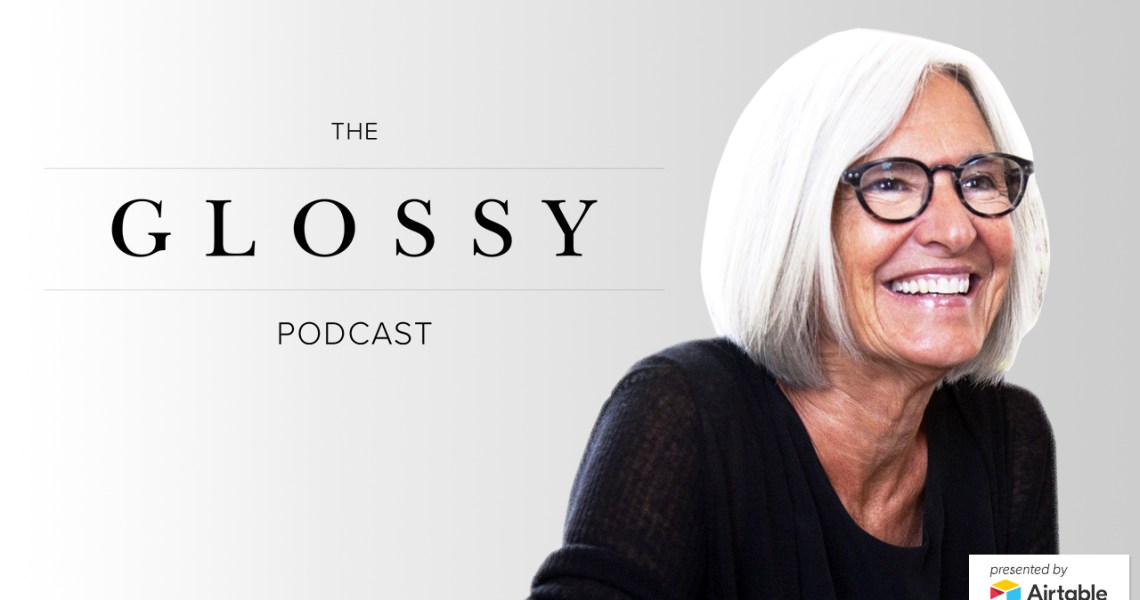Subscribe: iTunes | Stitcher | Google Play | Anchor
When Eileen Fisher started her namesake brand in 1984, it wasn’t the plan from the outset that the label would eventually become synonymous with sustainability in the fashion industry. Her goal was simply to do a better job of making clothing that would outlast everything else in her customers’ closets.
“Sustainability was always part of the brand, but our approach from the beginning mainly centered around good quality materials,” said Fisher. “Good quality materials last. Then there’s simple design. So the more simple something is, the more ways you can wear it and [the more] things you can do with it.”
The Eileen Fisher approach to sustainability has since evolved to focus on reducing waste through a circular recycling program, a line of “remade” Eileen Fisher items designed from damaged or stained pieces from past collections, and an emphasis on storytelling and education. Now the head of a certified B-Corp organization, Fisher joined the Glossy Podcast to share how the brand’s manufacturing partners, customers and competition have changed.
Building a sustainable business from the ground up
To Fisher, every fashion brand faces an uphill battle when it comes to establishing sustainable practices. To make continuous progress, success requires dogged curiosity, a willingness to push partners and an inherent commitment to the cause at the company level.
“Sustainability means asking more questions. It means working with your suppliers to say, ‘We love this cotton, but how do we make it organic?’ or ‘This is an interesting material; tell us more about how it’s made,’” said Fisher. “It’s about constantly learning and getting everyone on board to make sure they know it’s part of the mission. How we got here is that we just did it for years, and a big part of that was the people we attracted along the way — people who understand the complex of simplicity and sustainability by nature. It was built in from the ground up.”
Ad position: web_incontent_pos1
Fashion’s consumption conundrum
Nearly 10 years ago, Fisher set out to solve the brand problem that to sell more, you need to make more, while continuing to negatively impact the environment. She realized that since her collections had been made with durable materials over the years, the brand could just ask for clothing back when people were done with it. Now, items given back to Eileen Fisher in good condition are washed and resold as vintage pieces, while items that are damaged are remade into entirely new collections using the recycled materials. Fisher said that “millions” of pieces have been sent back to the brand.
“The big problem with fashion is overconsumption. Anything we can actually do to make less and sell less feels contradictory because good business means selling more. So how do you make sense out of that?” said Fisher. “To actually be able to sell more by not making more, you get to use your creativity. The concept of taking full responsibility for what you make from the very beginning is very important to me. From seeds to farmers, to animals, to workers, to the chemistry — all the way until the customer is finished. And then what? It all starts with the material; it has to be made to last. And then we can close the loop.”
The bright side of greenwashing
Sustainability is trendier than ever — so much so that it even has a new name: transparency. Fisher said she’s noticed over the past two years that more customers are coming to the brand seeking out answers as to how, exactly, it practices sustainability. So, it’s taken to being more forthright about education on the subject and telling its personal story online — something that Fisher supports other brands taking up, as well, even if they’re not as fully committed yet.
“At the beginning, it might be just a story, or just one project. But if a brand sees that the customer is interested, they’ll be encouraged and will hopefully do more to be more sustainable,” said Fisher. “I think the customer really needs to understand the buying power they have, and that they need to vote with their wallets.”




